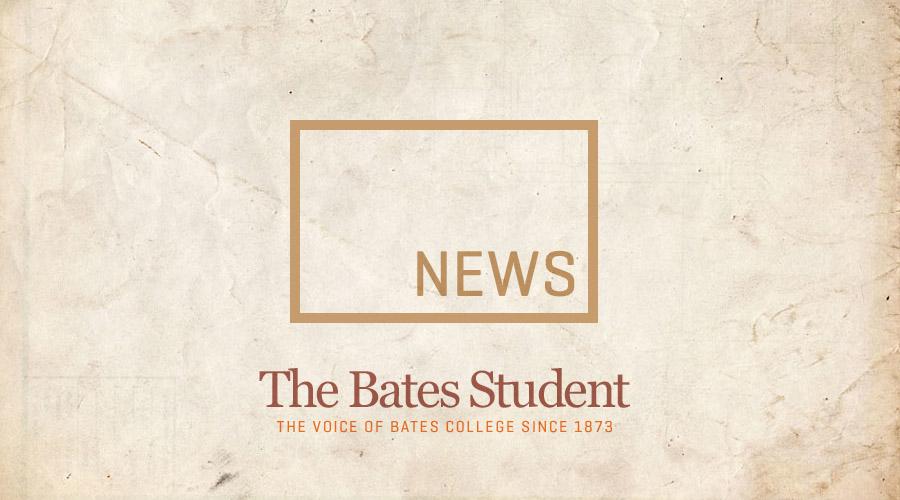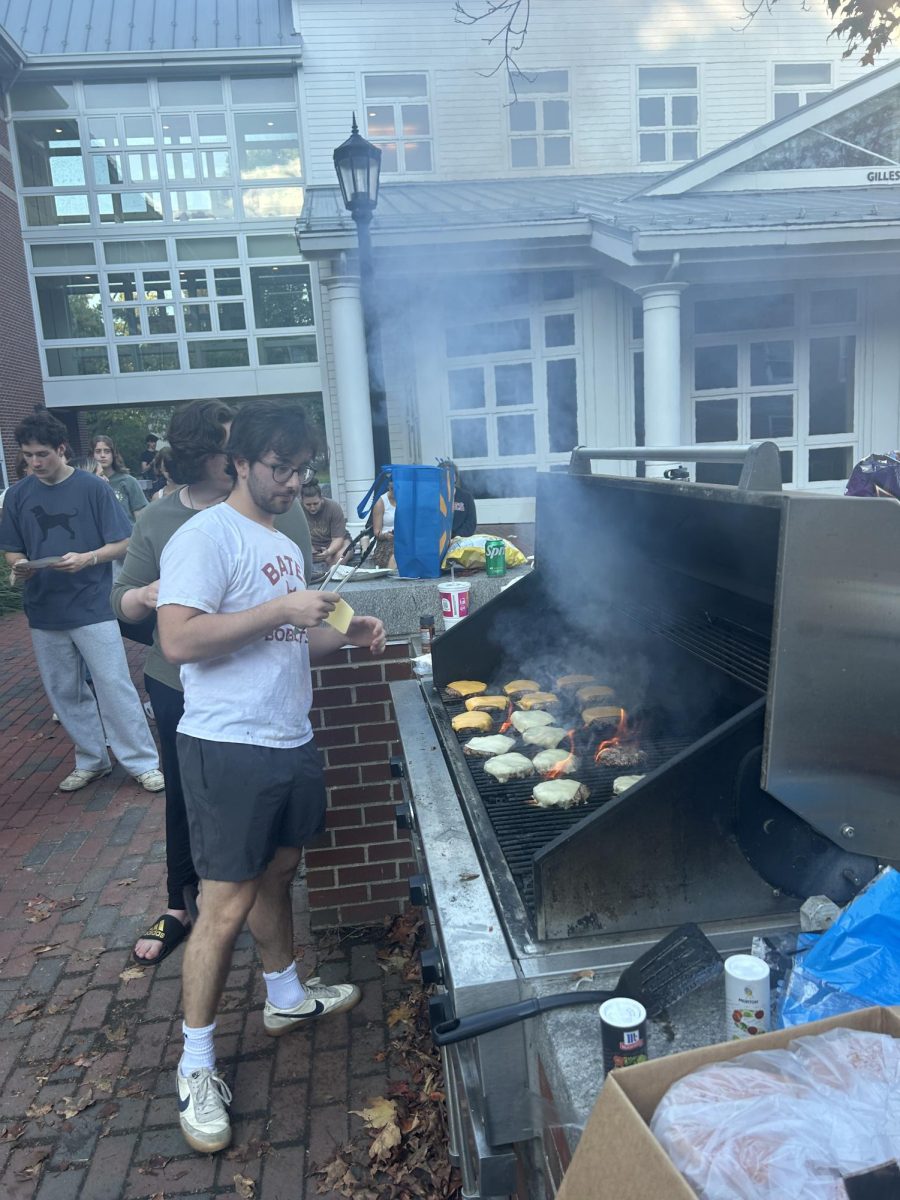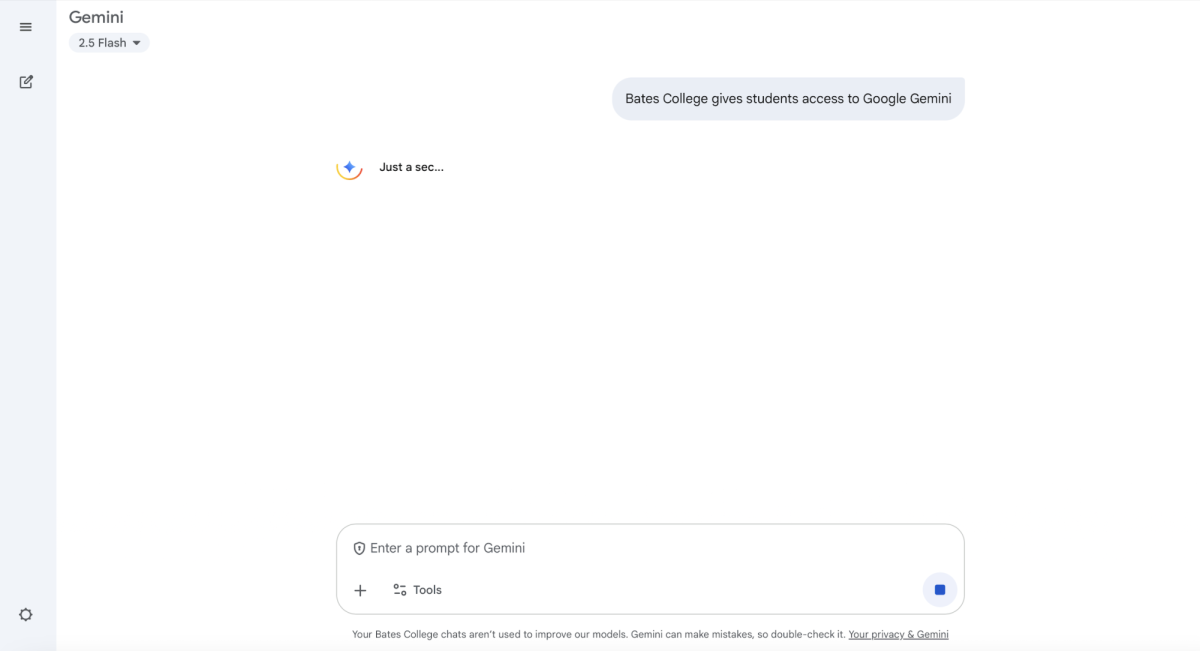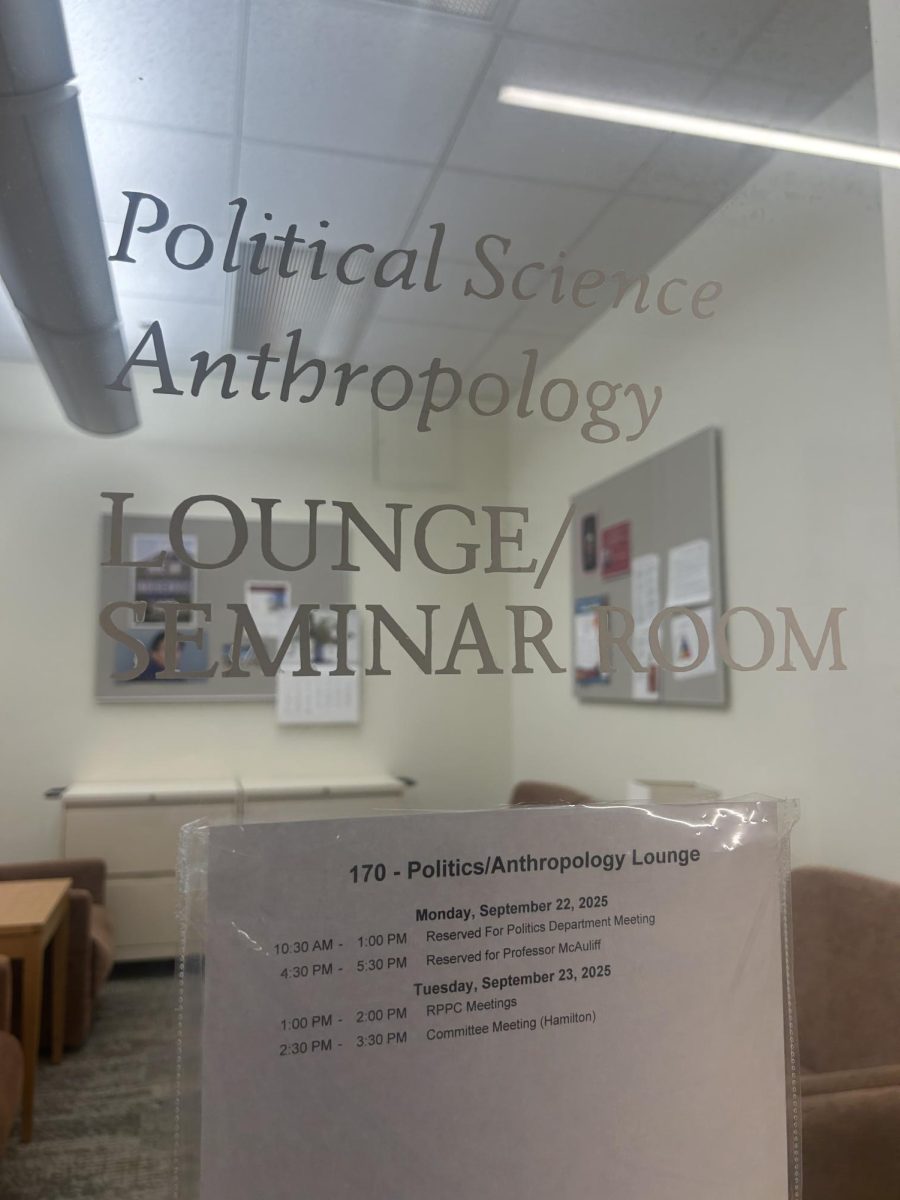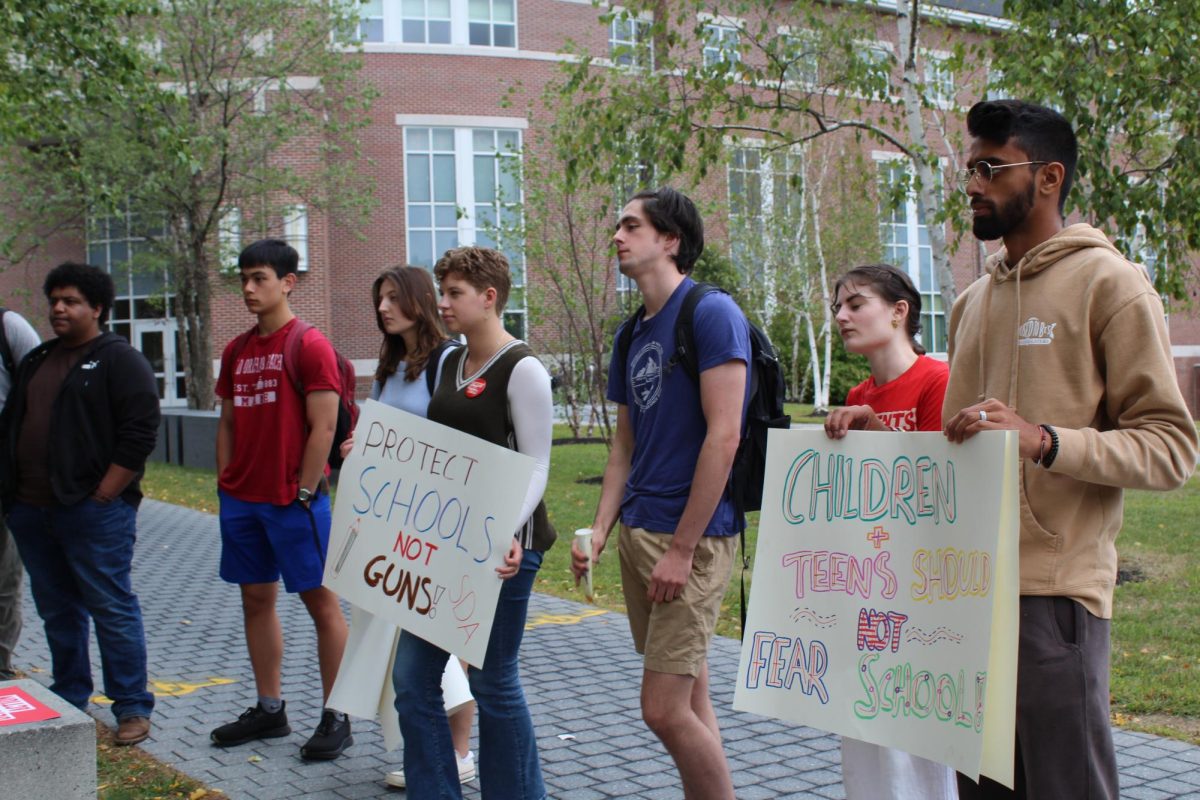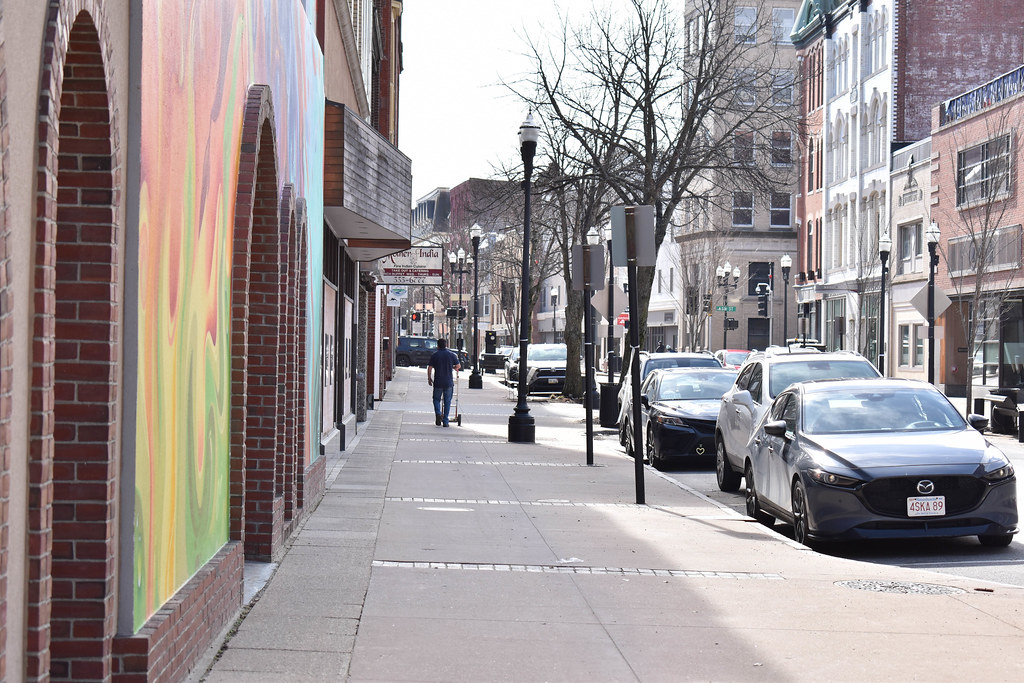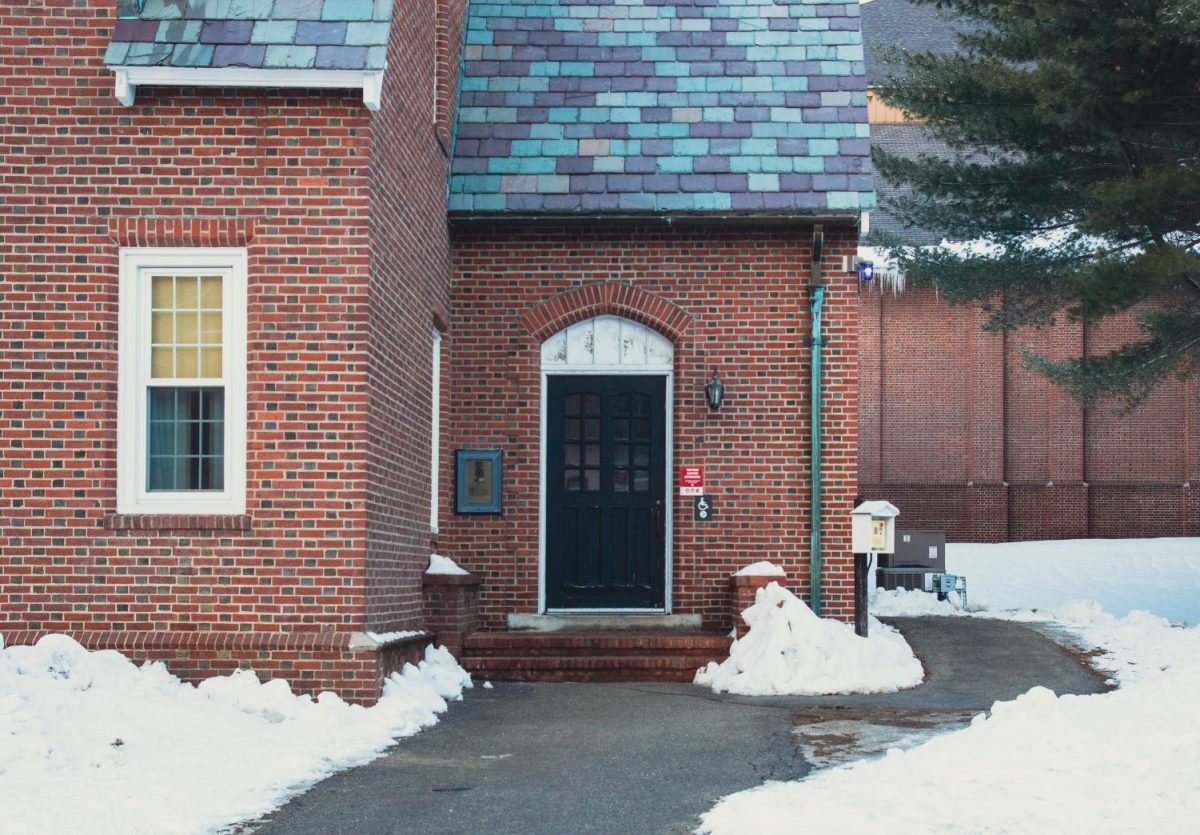On October 2, a gaggle of loud Bates students could be heard cheering for immigrant rights and hoisting up posters outside of Commons.
The content of the protest — given the fact that the news cycle that Tuesday was almost exclusively centered around Judge Brett Kavanaugh’s Supreme Court nomination — seemed like a slightly abrupt topical shift.
But the immigration protest was not random — it was planned by members of Professor Jacob Longaker’s Social Movements in Latin America class, for which being involved in a protest is a requirement. According to Longaker, the class is “designed to equip students with working knowledge of social movement theory and dynamics through an investigation of landless peasant movements, LGBT movements, urban squatter movements, and women in guerrilla movements…We cover movements in most of the Latin America region (Brazil, Mexico, Nicaragua, Guatemala, El Salvador, Honduras, Ecuador, Peru, Chile, Argentina, and probably some more…).”
Longaker included protest as a class requirement because “we consider protest to be one of the defining characteristics of a social movement… I’ve integrated the protest experience into the class curriculum as a well for students to engage in active experiential style learning. I’ve found that many students don’t come to class with any prior experience with movements or participation in a real protest.”
I spoke to two of Longaker’s students, Hannah Palacios ‘21 and Elizah Laurenceau ‘19, to gain a better understanding of the demonstration.
Palacios noted that the content of the protest was deliberate — in the frenzied media circus we experience today, important issues moment are often swiftly brushed to the side for newer ones. “We chose to tackle the issue of immigration because although it had been widespread during the summer, it wasn’t really being talked about anymore even though there are still 12,800 kids separated from their families. We wanted to highlight that the issue, and all issues for that matter, aren’t just solved and are still ongoing.”
Palacios remarked that organizing the protest was a group effort. “In class, we spent one class block discussing and learning about the elements of a successful protest, choosing our protest topic, and brainstorming slogans and creating posters. After that, we broke up into groups addressing those different elements — one group did outreach: Bates Today, the Facebook group, contacting Phyllis. One group looked up testimonials and poems etc, another did the call sheet.”
“As for my part in the protest,” Palacios noted, “I mostly was the lungs. I was leading the calls on the call sheet as well as reading some of the poems and testimonials.”
Laurenceau commented on the unconventional and edifying nature of a protest as a class requirement — especially as an exercise in the difficulties of collective action. “I think it was a very interesting assignment. It helped us understand how difficult it can be to create a movement and have it be successful. Having this protest be a requirement definitely made our protest stronger. We were, in a way, forced to make it successful. Each group had a piece to work on and it helped delegate tasks to ensure the protest ran smoothly.”
Palacios noted that she was initially somewhat hesitant to take on a class required protest, “…because if you really are not passionate about the issue it will skew [the] environment and effectiveness of a protest.” Palacios found the result, however, to be ultimately a useful and positive one in terms of getting students comfortable with protesting and familiarizing themselves with the issue at hand. “…In terms of our protest, I could tell that the actual act of protesting made some people uncomfortable, but I feel as we stood out there for longer people got increasingly more comfortable as well as all really cared about the issue.”
Laurenceau too was pleased with the way the protest went. “Overall, we were very happy with the outcome, we informed over one hundred people with our flyers that had facts on immigration and family separation.”
In any case, the protest offered Bates a fascinating glance at the organizational details of political activism – a valuable lesson, no doubt, for members of Professor Longaker’s class and anyone else outside of it.


